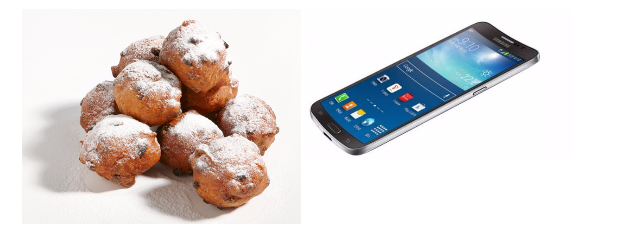The Best Way to Share Success with Your Customers
Relevant topics Archive, Advertising
Imagine you receive some good news. An independent consumer panel has ranked your book as 7th best written, your shampoo smells the second best or the laptop you sell is ranked 37th on a list of hundred others.
Great news – isn’t it?
Achieving this is amazing. But how are you going to tell it to your public? Of course you want to get the most out of it. What is the best way to tell your public that the quality – which, of course, you already knew you had – is now also confirmed by an independent judge? Will you tell them the exact rank? Or does it bring your brand in a more favorable light when you use more round numbers. To clear this distinction up a little: you could say that your camera became number 7 on the “Top Deals” list of Mediamarkt. Or you could just simply say you’ve made it to the top 10.
Which frame is more persuasive?
At first, it is good to know that mentioning it (no matter how) is always more beneficial than not mentioning it at all. Bragging about your accomplishments doesn’t seem to be such a bad idea after all…
But again, how?
An effect named the comfort tier effect describes that the use of round numbers for ranking lists leads to higher brand evaluations. Why? Simple: people are more comfortable with things they expect. Since ranks like top 10, 20, 50 etcetera are used more often, we feel more comfortable with it than with a more exclusive number like for example top 9 or top 18. Results are very clear. Researchers found that people were willing to pay 10% more for a product ranked as a top 10 member, compared to a product ranked as top 9.
Easy, so it seems. But of course there are exceptions.
High- vs. Low-involvement
People differ in the way they process information on such ranking lists. Most of the time, people process such information outside consciousness. They do not pay much attention to such lists. It’s for this reason that the fluency of round numbers works so well for most brands. But sometimes choices are a bit more complex than the choice of what you will be eating tonight. In this case, we use a different way of processing. This is the case with high-involvement products. People will be more curious to know why products are ranked the way they are, and which rank exactly it is they received.
In this case, people will process the information on ranking lists more consciously. When they realize the information handed to them is not transparent at all, they will get annoyed. Top 50 can mean #17, but also #49. We feel shielded from the truth. That is why in these cases, it is better to use a more exact rank.
Bakers vs. Samsung
Let’s look at an example for both categories. In Holland we celebrate New Years Eve by Sinking our teeth in deep fried donut-y treats named ‘oliebollen’. Every year hundreds of donut bakers compete for the best oliebol. Since donuts are low-involvement products, the successful bakers would pack an extra persuasive punch by telling their customers they made it to the top 10 for best donuts. On the other hand, Samsung - who sells mostly high-involvement products - would benefit more from telling their customers they reached rank #7 in the contest for best phones of 2016 on a big review website. This will communicate their transparency.

Top 10! #7!
So think well when you receive the good news. Make sure you hit the right number. After all you didn’t deliver all the hard work for nothing!
Take home points:
- You should never miss a chance to tell your customers when you made it onto a ranking list
- Info on these lists will be processed differently for high- vs. low-involvement products
- For low-involvement products, use rounded ranking lists
- For high-involvement products, use exact ranks
Further Reading
-
The best ways to apply scarcity appeals in advertising
“Majority of stock sold!”, “Nearly sold out!” Are you getting nervous by seeing these kind of phrases in advertisements? Do you have the feeling that you have to buy this product? Personally, when I need a product and see this kind of advertisements I want to buy the product immediately. I don't want to run the risk missing out on this fantastic offer. As a marketer I know a lot about the influencing power of advertisements, but why do I still fall for these scarcity appeals?

